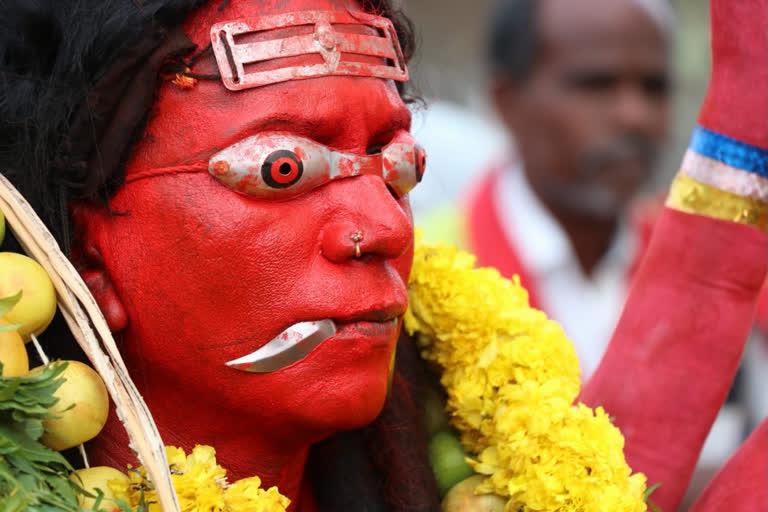Kulasekaranpatnam (Tamilnadu): Kulasekarapatnam – a small town on the Southern tip of Tamilnadu, might not be on the wish list of tourists but this nondescript coastal town in Thoothukudi formerly Tuticorin district of the state bursts with color during the 12 days (In most of the places it is nine days) Dussehra festival attracting millions of tourists across the globe.
In Kulasekarapatnam, the Dussehra festival is celebrated at the Muthumariamman temple - a temple that is more than 300 years old. There is a story connected with Dasara to this temple. Once Varamuni, a Rishi fails to give proper respect to Sage Agastya. Then he is cursed to have the head of an ox and a human body and he was told that he could get rid of the curse through the Goddess.
He, as Mahishasura, went to all the places spreading his tentacles. In order to escape from him, the Devas and Rishis prayed to Siva. Lord Siva, in turn, asked them to worship Parvati. The Goddess promised to help them and asked them to perform a Yagna and through the Yaga, a baby girl named Lalitambikai appeared. The child grew up in nine days and on the tenth day, she became the Parasakthi Lalitambikai and slayed Mahishasura. The 10th day of his killing is celebrated as Dasara. The previous nine days are celebrated as Navaratri.
Dussehra, the most famous temple after Mysore in India, is held in this temple. During this festival, devotees from all over Tamil Nadu fast for either 91, 48, 41, 31, 21, or 11 days and take Kumbha wearing various costumes. Lakhs of people gather at this popular festival.
Interestingly enough to commemorate the festival, Goddess Mutharamman bejeweled in grandeur is taken in procession on these days, in different avatars. Following an age-old tradition, devotees vow to beg for alms, donning various celestial forms such as Goddess Kali, Kings, monkeys, beggars, etc. The money collected is offered to Goddess Mutharamman. They dress like gods/goddesses.
They would maintain purity on all levels - body, mind, and soul. People who pray “Goddess KALI” tend to be more cautious than others, as people approach them for blessings. Troupes dressed up like their favorite God or Goddess travel to surrounding villages and perform different acts and collect donations which will also be offered to the temple. The last day of the festival depicts the epic story of Magisasura Mardini [Goddess] riding a lion and slaying Magisasura on the shores of Kulasekarapattinam at midnight. This is known as “Soorasamharam”.
Also Read: DMK not against spiritualism, but opposed to mixing religion with politics: Stalin
Wednesday being the last day of the celebration, pilgrims dressed like Maha Kali began to crawl in the streets of Kulasai and then turn towards the Mutharamman Temple and then go towards the beach. Swinging fervently with Agni Pots in their hands they stream towards the beach. Later, keep down the fiery pots on the beach to quell the frenzy.
Not only the devotees but also the Dussehra festival attracts photographers from all over the country. Manoj Patil, a photographer, who came from Mumbai said, "I have heard about the Kulasai festival from my friends. I have come to the Kulasai Dussehra festival for the first time but now I am thinking of coming every year".
Strict security was imposed to avoid any kind of untoward situation. Devotees were forbidden to bring iron weapons. It could be seen that the police took away the flags from the youths who came with the flags denoting the castes and gave them a warning. District SP said, "More than 2 thousand policemen have been engaged in security work in Kulasekarapattinam alone".



